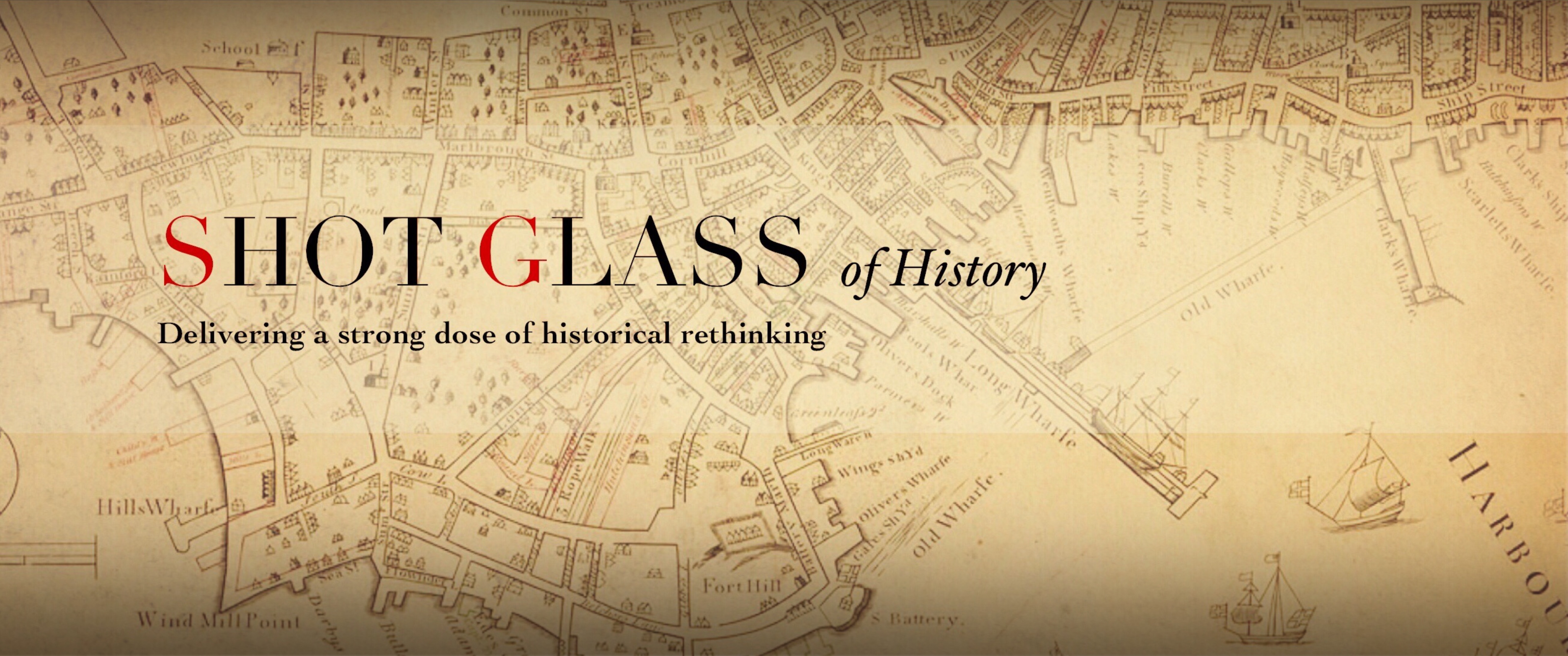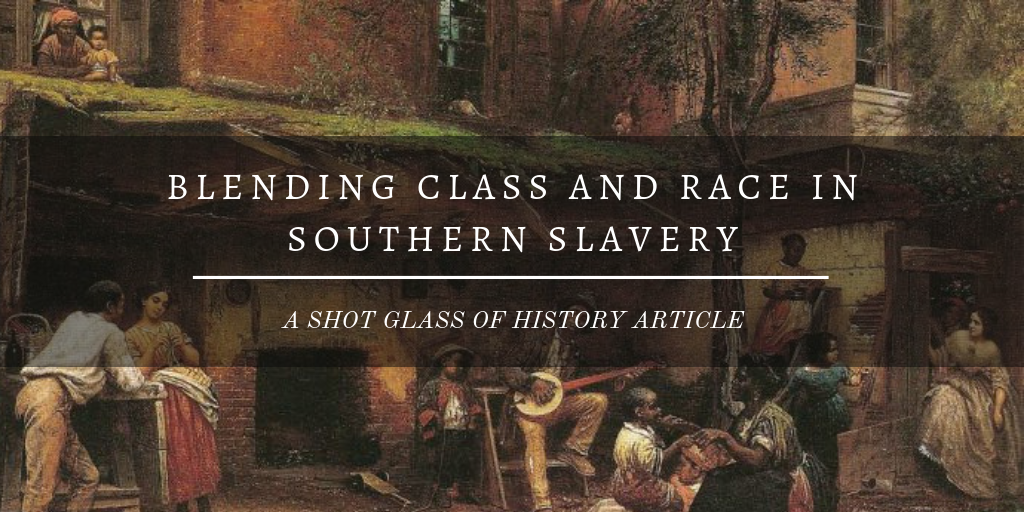Masterless Men: Poor Whites and Slavery in the Antebellum South
BY KERI LEIGH MERRITT
CAMBRIDGE UNIVERSITY PRESS, 372 PAGES, $24.55
–
Keri Leigh Merritt’s work, Masterless Men, is a fascinating and long overdue examination of the difficult relationship between Southern slavery and poor whites in the Antebellum period. While it is common to focus solely on the effects that slavery had on the enslaved blacks, Merritt discusses in great depth and detail how the institution affected the supposed free whites living on its edges. Specifically, one of the important topics that she brings up in her book is the manner in which the planter class attempted to prevent the blending of race and class in Southern slavery, and the consequences of their failure to segregate poor whites and black slaves.
From the start, American slaveowners tended to defend the institution of slavery for religious rather than racial reasons, but as the system evolved over the course of the 17th century, skin color and culture became the established basis for American slavery.1 By the time of the antebellum period the Deep South planters took it for granted that slavery was the proper and natural condition for individuals of African descent.2
At the same time, in addition to widespread, racial, slave labor, the South was also characterized by a sharp class distinction among its free white population. This class divide had existed with the very first immigrants that came from Britain to the American South, but as time went on the divide only solidified as the planter class used state power to subsidize their hold over the slave population as well as over large tracts of Southern land, with the goal of keeping poor whites disenfranchised, and with the added effect that poor whites were unable to competitively exchange the one thing they did own, their labor. “The region’s dependence on brutalized, enslaved labor rendered wage laborers superfluous, and white workers’ pay fell as job opportunities continued to disappear. Slave owners thus created a pervasive criminal system to deal with the impoverished.” (Merritt, Masterless Men, pp. 266-267). But the legal system was not enough to prevent Southern “white trash” from interacting with slaves and spreading dissent, and throughout the South the same means and organizations that were commonly employed to police blacks were also used against the lower class to enforce segregation.
[M]asters used slave patrols for constant surveillance of both blacks and poor whites. Similarly, slaveholders also relied on extralegal groups like vigilance committees and minute men organizations. Precursors to the Ku Klux Klan, these terroristic groups used violence and threats of violence to maintain the southern hierarchy, and their ranks proliferated with the rise of the Republican Party. Violating a spate of civil liberties laws, the Deep South was a heavily censored society, where speaking of abolition, or reading about class issues, or listening to a sermon on the humanity of slaves could end in a swift death of the accused. (p. 35)
A class of poor, landless whites thus became permanently tied to the bottom rung of a feudal, Southern society, having less social worth, and definitely less economic worth than black slaves. “They were certainly not slaves, but poor whites enjoyed relatively few privileges as whites. Instead, their class status doomed them to continuing cycles of poverty, and limited their civil rights as white American citizens” (p. 266). As a result poor whites and black slaves did not identify by their race, and instead naturally tended to socialize with one another.
But social and slave unrest was not the only reason that Southern planters employed harsh measures to try to keep the races separate. Since skin color and culture were the basis for Southern slavery, it was essential that slaveholders be capable of clearly classifying and identifying individuals as black or white. However, in the 17th century, Southern lawmakers had broken with the English common law tradition and declared that children adopted their mother’s, rather than their father’s, slave or free status. The idea behind this had been to create a hereditary system of slavery whereby planters could breed slaves without having to deal with the concern of free fathers taking away their future capital. But it had a surprising side-effect that threatened the entire basis of the race-based slave system because by making the mother the determining factor for the child’s status, infants of poor white women conceived by black men (slave or free) were also legally free, while the offspring of slave women would be permanently slaves regardless of their skin color and the status of their fathers. This hereditary system of slavery, coupled with the ineffective attempts to enforce segregation resulted in a thorough blending of race among slaves and the lower class in many Deep South states. Keri Leigh Merritt quotes Alexis de Tocqueville: “There are parts of the United States where the European and Negro blood are so crossed that one cannot find a man who is either completely white or completely black; when that point has been reached, one can really say that the races are mixed, or rather that there is a third race derived from the two, but not precisely one or the other” (p. 33).
The increasing inability to clearly identify whether a person was black or white, and thus slave or free, created problems throughout the South for Southern states’ tax codes, criminal laws, property laws, and litigation laws that were all built around race and class.3
With the prevalence of slave hiring, the presence of free blacks, and the darkened skin of poor whites who generally labored in the hot southern sun, the region’s racial hierarchy was becoming unwieldy and unenforceable. Lines separating the supposedly dialectic categories of black and white, slave and free, were gradually becoming blurred, and in some cases, even indistinguishable. From advertisements for white slaves, to court cases where poor whites were sold into slavery, the racial dynamic of the Deep South was growing ever more complicated and nuanced, undoubtedly adding to slaveholder concerns over the long-term maintenance of “black” slavery. (pp. 33-34)
As the planting class became increasingly unable to clearly, legally delineate between the races, what few advantages that poor whites had as white and free began to evaporate as Southerners even began to cast aside the racial justification for slavery. “As slave skin became lighter, the theoretical arguments promoting chattel racial slavery undoubtedly weakened” (p. 264). Claims began to appear in the Deep South that slave labor was not merely good among blacks, it was a natural state for all subservient classes of humanity, regardless of skin color. Merritt quotes Fox-Genovese and Genovese saying that in the years preceding the Civil War, Southern rhetoric had “declared slavery or a kindred system of personal servitude the best possible condition for all labor regardless of race. Pro-slavery logic cast enslavement, broadly defined, as necessary and proper for much of the white race, as well as for practically all of the black race” (p. 271). Merritt then goes on: “Slavery in the abstract rapidly won adherents throughout the Deep South in the 1850s, particularly in South Carolina. The issue gained such widespread support among slaveholders that in 1856 the Republican Party distributed handbills cautioning working class whites of the designing and devious plans of the master class – plans that eventually included enslaving poorer whites” (p. 34). And this was not merely empty Northern rhetoric, as Southerners began to not only defend slave labor as right and proper, but to also denounce Northern wage labor as the antithesis to the natural good of slavery.4
Founded on principles of free labor, agrarian reform, and a type of relatively egalitarian, small-scale capitalism, Republicans not only seemed like radicals to slaveholders – they were truly revolutionary, and not solely because of their stance on slavery. The new party clearly elucidated the staggering differences between the two sections of the country, and the comparison did not bode well for the South, where large-scale, slave-labor capitalism reigned supreme. Offering land to the landless and workers’ rights to wage laborers, the entire Republican platform would have been incredibly appealing to southern poor whites – a possibility that terrified slaveholders. (pp. 34-35)5
Ultimately, with these mounting tensions, it is not surprising that blood was eventually spilled. While Britain had been able to peacefully pursue slave abolition, it was merely a society that had slaves, unlike the American South that had an entire economic and social system built around the violent suppression of a lower class and race. Furthermore, the American South was a slave society whose foundations were threatened should its lower class and slave populations insist on natural rights and free labor as preached by Northern Republicans. In the end, the South’s colonization of its own inhabitants was unable to compete with Northern industrialization, which in turn threatened to colonize the South, leading to the Civil War.

Footnotes
- Peter H. Wood makes the case for this in his book, Strange New Land: Africans in Colonial America (New York: Oxford University Press, 2015), a summary of which can also be found in this article written by him for Slate: “The Birth of Race-Based Slavery.”
- See for example Confederate Vice-President, Alexander H. Stephens’s famous “Cornerstone Speech,” delivered at Savannah, Georgia, on March 21, 1861.
- For one specific example, in many states in the South there was a multi-tiered, class based system of punishment for whites who harmed or killed slaves. This allowed slave owners to mistreat or kill their own slaves with little legal repercussion, while exacting harsher and harsher penalties for those of lower classes. For more on this see Andrew Fede’s work on the subject in Homicide Justified: The Legality of Killing Slaves in the United States and the Atlantic World (Athens, GA: University of Georgia Press, 2017).
- Matthew Karp describes in his work, This Vast Southern Empire: Slaveholders at the Helm of American Foreign Policy (Cambridge, MA: Harvard University Press, 2016), how Southern planters saw their international role in the 1840s as a struggle between the U.S. slave-based, agrarian economy, and the free, wage-labor of Britain. A partial summary of which can be found in the following article: “U.S. Military Expansion Under the Empire of Slavery.”
- Sean Willentz brings out just how revolutionary abolitionism was in the early Republic in his book, No Property in Man: Slavery and Antislavery at the Nation’s Founding (Cambridge, MA: Harvard University Press, 2018). Abolitionists were contending that Southern planters had no right to declare property over a certain market good, similar in the eyes of antebellum Southerners to someone today demanding that all homeowners renounce ownership over their homes.


Given the fact that New Jersey was the last state in the Union to be forced to give up its slaves, which didn’t occur until the ratification of the 13th Amendment in December 1865, eight months after the Civil War ended, when is there going to be a discussion about slavery in the North and the race relations taking place there?
Let’s not forget, Abraham Lincoln himself stated on several occasions that he believed there were physical and mental differences that would forever prevent the black and white races from living together as equals or intermarrying. He also stated that since both races were stuck living with each other, he believed that his race(white) should be given the position of superiority over the black race.
Let’s have that discussion.
This isn’t an either/or option. We can talk about poor, Southern whites and their relationship to slavery, and then also go and have a discussion about Northern race laws. But since we don’t have an infinite amount of time, we have to start with one to the exclusion of the other, which doesn’t delegitimize the initial discussion.
slavenorth.com